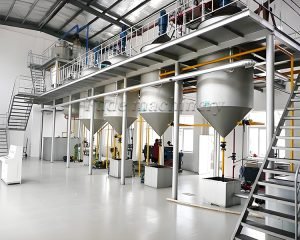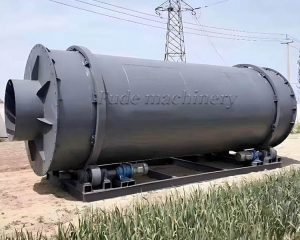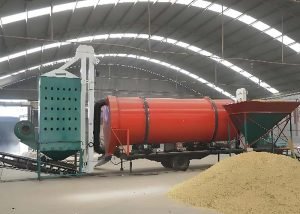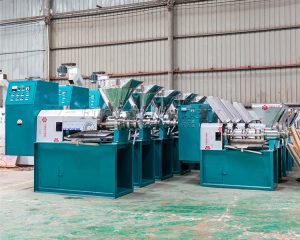Why Would You Need to Refine Avocado Oil?
Got crude avocado oil but it’s not quite right? Wondering if refining is necessary and what it involves? Let’s explore why and how avocado oil is refined for quality and stability.
Refining removes impurities like free fatty acids, gums, pigments, and off-flavors from crude avocado oil. This improves stability, smoke point, and makes the oil neutral for wider applications.
What is Degumming in Avocado Oil Refining?
Dealing with cloudy or sludgy crude avocado oil? Confused about what gums are and why they need removal? Learn about the first crucial step: degumming.
Degumming removes phospholipids (gums) from crude oil. Usually, hot water is added to make gums clump together, then they are separated using a centrifuge.
The main goal of degumming is to get rid of sticky phospholipids, often called gums. The most common method is water degumming. We heat the crude oil (around 60-70°C) and mix in a small amount of hot water (about 1-3%). The gums absorb the water, swell up, and stick together. Then, we use a high-speed centrifuge to spin out these hydrated gums, which become a byproduct called oil phosphatide sludge or “gums.” Sometimes, a small amount of food-grade acid, like phosphoric or citric acid, is added first. This acid treatment helps break down metal compounds linked to the gums, making the water degumming more effective.

How is Acidity Reduced in Avocado Oil Refining?
Worried about that sharp taste or “off” smell in crude oil? Need to lower the Free Fatty Acid (FFA) content? Understand the deacidification step.
Deacidification removes Free Fatty Acids (FFA), the main cause of rancidity. This is done either chemically using alkali (neutralization) or physically using steam distillation at high temperature.
High levels of Free Fatty Acids (FFA) make oil taste sharp or rancid and reduce its shelf life. Removing them is crucial. There are two main ways to do this. Chemical refining, also called alkali neutralization, is common. We add a precise amount of alkali solution (like caustic soda) to the heated oil. The alkali reacts with the FFA to form soapstock (soap). This soapstock is then removed using a centrifuge. Physical refining uses steam distillation. This happens later in the process, usually after degumming and bleaching. The oil is heated to high temperatures (often above 240°C) under a strong vacuum. Steam is passed through the oil, stripping away the FFA along with other volatile compounds like odor molecules.
What Does Deodorization Do in Avocado Oil Refining?
Want a completely neutral tasting and smelling avocado oil? Need to remove any lingering off-notes? Learn about the final refining step: deodorization.
Deodorization removes volatile compounds that cause undesirable odors and flavors. Hot oil is treated with steam under high vacuum to strip away these compounds.
This is often the last main step in refining (though in physical refining, it happens concurrently with deacidification). Its purpose is to produce a bland, odorless oil by removing volatile compounds. These include aldehydes, ketones, remaining FFA, pesticide residues, and other small molecules responsible for unwanted tastes and smells. The process involves heating the bleached oil to a high temperature (typically 180-240°C, sometimes higher) under a very strong vacuum (less than 5 mbar). Direct steam (stripping steam) is injected into the hot oil. The combination of high heat and high vacuum makes the volatile compounds easily evaporate, and the steam carries them away.
Does Avocado Oil Need Dewaxing or Winterization?
Heard about dewaxing for other oils? Wondering if avocado oil needs this extra step to prevent cloudiness? Get the clear answer.
No, avocado oil generally does not require dewaxing or winterization. It has low levels of high-melting point waxes and saturated fats, so it usually stays clear even when cool.
Some vegetable oils, like sunflower, cottonseed, or corn oil, contain natural waxes or higher amounts of saturated fats that can crystallize and make the oil look cloudy or even solidify when chilled (e.g., in the refrigerator). Dewaxing (also called winterization) is a process used to remove these components, typically by chilling the oil slowly, allowing the waxes/fats to crystallize, and then filtering them out. However, avocado oil is different. It naturally has a relatively low amount of saturated fat and very few waxes. This means it tends to stay liquid and clear even at moderately cool temperatures.

What Key Equipment Makes Up an Avocado Oil Refining Line?
Planning to set up refining? Confused about the different machines involved? Get a list of the essential equipment for a complete refining process.
A refining line includes core units like centrifuges, reaction tanks, filters, and a deodorizer, plus vital auxiliary equipment like heat exchangers, vacuum systems, boilers, and controls.
Building a complete avocado oil refining plant involves several interconnected pieces of equipment working together. The exact configuration depends on whether it’s chemical or physical refining, batch or continuous operation, and the desired capacity, but the core functions remain similar.
Conclusion
Refining transforms crude avocado oil into a stable, neutral product suitable for high-heat cooking and various formulations, though natural characteristics are lost. Understanding each step helps select the right process.
Related recommendations
-
Can Ignoring Crude Oil Quality Ruin Oil Refining?
19When Chemical Refining Works BestThe Demands of Physical RefiningMaking the Right ChoiceIs Simple Hot Water Degumming Enough?Why is Deodorization So Critical and Energy-Intensive?Goals of DeodorizationCritical Operating ParametersEquipment Design...
View details -
How is sesame oil squeezed out
189The pressing process of sesame oil is a complex and delicate process
View details -
What is a three cylinder dryer
143The three tube dryer achieves efficient drying of materials through the structural design of the inner, middle, and outer tubes
View details -
Introduction to Types of Agricultural/Industrial Dryers
211There are various types of dryers, including grain/box/continuous/industrial drying, with diverse drying materials and multiple options for heat sources such as electricity, wood, and biomass pellets.
View details -
What is the difference between hot pressing and cold pressing in an oil press
243Oil presses are divided into hot presses and cold presses in terms of processing technology, oil characteristics, and usage scope.
View details
 Oil Press Equipment and Oil Refining Machinery for Sale – Start Your Oil Press Business
Oil Press Equipment and Oil Refining Machinery for Sale – Start Your Oil Press Business





HelloPlease log in